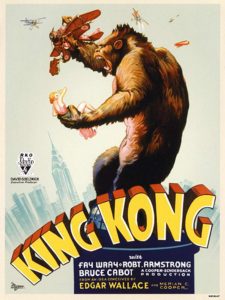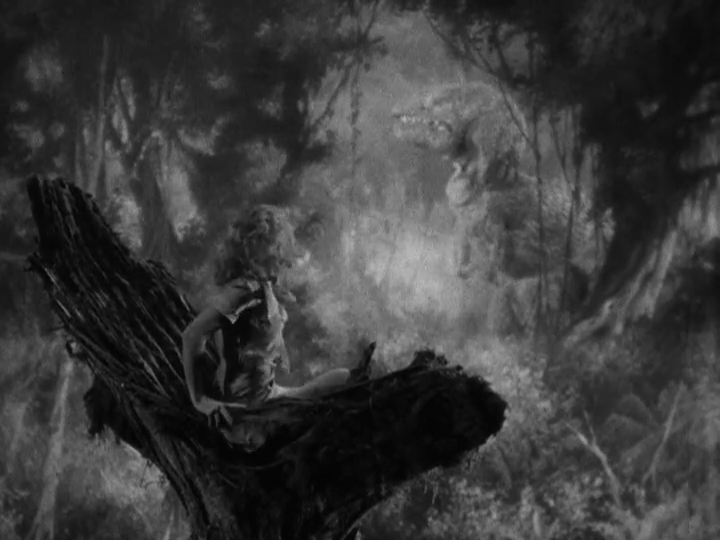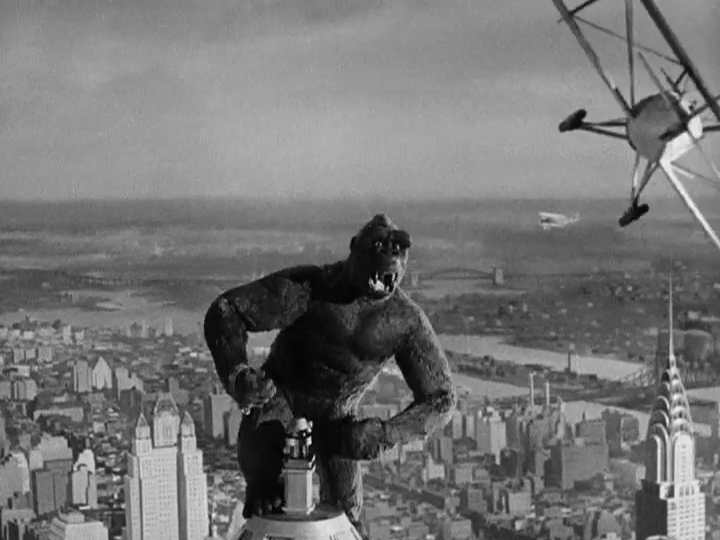King Kong (1933)
“Cover your eyes and scream, Ann — scream for your life!”
|
Synopsis: |
|
Genres, Themes, Actors, and Directors:
Response to Peary’s Review: In Alternate Oscars, Peary names King Kong the best film of the year, referring to it as “the greatest, most popular, most entertaining, most influential, and most fascinating horror-fantasy film ever made.” He writes that it is a “brilliantly imaginative, thrilling adventure film with awesome special effects/stop-motion animation…; a splendid, emotion-manipulating… score; exciting monsters; amazing scenes of destruction and other classic sequences, including Kong’s death; and enjoyable performances by Armstrong, Cabot, and the sexy Fay Wray, the best screamer in Hollywood.” He asserts that “it can [be] — and is — enjoyed for being marvelous, escapist entertainment. But to have become such a part of the American psyche, it had to have been much more. It interests us so much because it exists on so many levels” — and he then moves on to the psycho-sexual analysis described above. Personally, I’m more an admirer than a fan of this groundbreaking film, which certainly deserves acknowledgement and kudos on numerous technical fronts. The 159 minute documentary RKO Production 601: The Making of ‘Kong, the Eighth Wonder of the World’ is must-see for all film fanatics, simply to learn more about how and why this movie was revolutionary in so many ways. The creativity and innovation put into filming an emotive stop-motion beast on fantastical sets alongside live actors at this early stage in cinematic history can’t be understated, as much as it may seem simplistic and relatively straight-forward to modern audiences used to CGI. However, I’m not enamored by King Kong‘s narrative, which not only presents native Africans as a monolithic group of fear-driven ritualists, but places a disenfranchised and vulnerable young woman at the center of all risks and adventures (to be had exclusively by men). While she primarily screams (and boy, does she scream — time and time again), I will say I’m impressed by Wray’s ability to imbue her character with vivacity and authenticity; we genuinely believe she’s experiencing everything we see on screen. Redeeming Qualities and Moments:
Must See? Categories
(Listed in 1001 Movies You Must See Before You Die) Links: |





3 thoughts on “King Kong (1933)”
King Kong (1933) isn’t a cult classic, but a bona fide cinema classic celebrated by all critics.
The 1976 remake is a cult classic; a film generally ignored or not liked by the critical mainstream but championed by a significant majority.
A no-brainer must-see. This is pretty much a staple of ‘Cinema 101’, whether you’re a film fanatic or not. My guess would be that most people who like movies at all – and who pay attention to the classics – have seen it. Myself – I think, all these years later, it still holds up rather well.
There’s not much else to add about a film like this. For me, it’s one of those that played on tv *constantly* when I was a kid. ~like, every time we turned around, it was being shown again.
What I didn’t know at that time was that we were always shown a print that had been cut – not to allow time for commercials (as was often the case) but because some things had been censored. It actually wasn’t until just a few years ago that I finally saw a restored print that included more violence, etc. (Information re: what was restored can be found through a Google search – or just watch the currently available DVD and see for yourself.)
Obviously a must see.